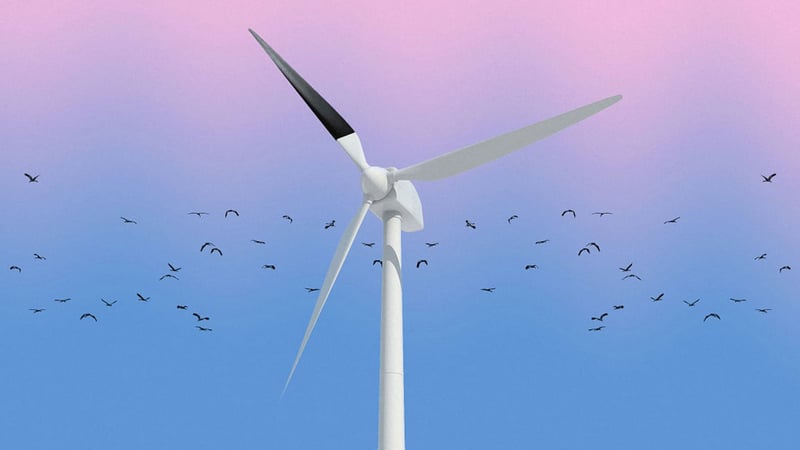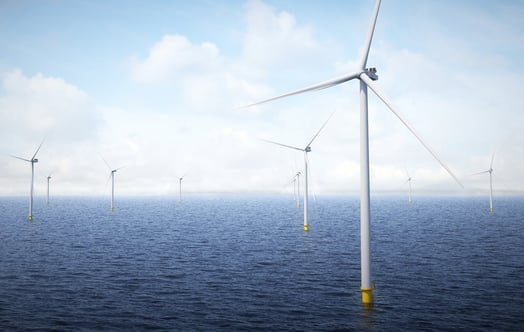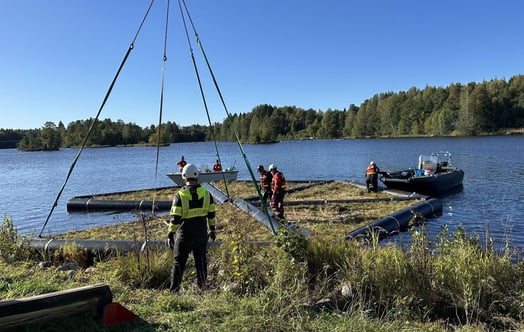The province of Groningen in the Netherlands and energy company RWE are investigating whether painting a wind turbine blade black will help reduce the number of bird victims. This is done in collaboration with other authorities and private parties, including Vattenfall.

Wind turbine with one black blade. Photo: iStock
The plan is to paint seven of RWE’s existing turbines in Eemshaven (with a tip height of 140 metres) black. The study has already started and is expected to run until the end of 2024.
Taking previous research to the Netherlands
A study financed by Vattenfall and a group of Norwegian partners on the island of Smøla in Norway has already examined the black dyeing of a wind turbine blade. That study showed that painting one blade of a wind turbine rotor black resulted in 70 percent fewer collision bird victims. "That has to do with the way birds perceive the moving rotor of a wind turbine," says Jesper Kyed Larsen, Environmental Expert at Vattenfall. "When a bird comes close to the rotating blades, the three individual blades can 'merge' into a smear and birds may no longer perceive it an object to avoid. One black blade interrupts the pattern, making the blending of the blades into a single image less likely."
In the Eemshaven, the effect of a black blade is being studied in our country. The Netherlands is home to different bird species and the landscape is very different from that in Norway, as is the meteorological conditions. Jesper Kyed Larsen: "We are continuously looking at ways to reduce the impact of wind turbines on the environment, and we are therefore very excited to be part of this study at Eemshaven to better understand the potentials of the black blade measure in a Dutch context. If we could find other ways of reducing collision risk to birds than temporarily stopping the turbines, and losing renewable energy production, that would of course be better for everybody.”
Landscape effects
One point of discussion in the Norwegian study was that black blades are more conspicuous to humans too. The question was whether the surrounding area would be affected by the visual effect. "Norway's west coast is not known for its blue skies and sunshine. On the contrary, it often has grey and rainy weather or days with mixed cover of often fast-moving clouds giving a very patchy illumination of the landscape and turbines within it. The black blades therefore hardly stood out in the landscape, no more than the grey blades in any case," says Bjarke Laubek, like Jesper Kyed Larsen Environmental Expert at Vattenfall. "The people living in the area didn't seem to be too bothered by it, and the black-painted blades were therefore allowed to stay until the end of their lifespan instead of just for the duration of the research project. In the Netherlands, we have clear blue skies more often than in Norway. The light setting on the turbines is therefore different, but it is still difficult to estimate how noticeable the black blades will be in a Dutch landscape. "
Effects on the blades
It will also be important to gain more knowledge about the practical and financial aspects of the black blade measure in a Dutch context. Will the black paint affect the durability and as a result the maintenance needs for the blades? The study at Eemshaven will be considering this as well.
Vattenfall research in North Jutland, Denmark
In 2020, Vattenfall completed and extensive research project into the behaviour of birds in the vicinity of wind turbines in North Jutland in Denmark. Jesper Kyed Larsen: "The research showed that the birds studied were much better at avoiding colliding the wind turbines than expected. Well above 99 percent of the pink-footed geese and cranes flying in the area were able to avoid the turbine blades."
Research black blade
The 'black blade' pilot project is an initiative of RWE and Groningen Province in collaboration with other public authorities (EZK and RWS ministries, Flevoland, Gelderland, Overijssel, Limburg, South Holland, and North Brabant provinces), the nature sector (Vogelbescherming) and private parties in the wind sector (Vattenfall, Eneco Energy, Pure Energy, Statkraft Energy and Groningen.nl Energy). This year a baseline measurement will be done. Next year, the blades will be painted black, and it will be monitored for two years whether that has an impact on the number of collision victims. In addition, aviation safety and the impact of the black blade on the landscape and the painted blades themselves will be examined.



